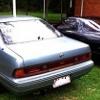Help, Rb20 Tries To Stall/die Randomly
Announcements
-
Similar Content
-
Latest Posts
-
Skyline R33 Series 2 sedan tail lights in excellent condition. These are becoming harder to find, especially in this state. BOTH SETS ARE IN FANTASTIC CONDITION (REFER TO PHOTOS) ✅ No broken covers or cracks ✅ Lenses are in flawless condition ✅ All rear mounting lugs intact ✅ Comes complete as pictured ✅ Perfect for restoration, replacement, or upgrade These lights are ready to go, no surprises just quality OEM parts. These are definitely one of the better sets we have seen in a while. With minimal wear and tear they will come as you see. Bear in mind they are not brand new they are almost 30 years old now. To find them in this condition isn’t easy they can only be obtained on the second hand market. Australia Wide Postage Available At Buyers Expense. Silver Set:$850 Grey Set:$850 PM Me for purchase or any other questions IMG_2166.dng IMG_2165.dng IMG_2172.dng IMG_2173.dng IMG_2174.dng IMG_2179.dng IMG_2180.dng IMG_2260.dng IMG_2258.dng IMG_2259.dng IMG_2261.dng IMG_2266.dng IMG_2273.dng IMG_2274.dng IMG_2276.dng
-
Unsolicited advice? Keep the engine as close to stock as you can. Nothing wrong with adding some boost and making a little more power, but given where you are, you really don't want to try to make it into a monster. I can't imagine the roads are up to it, and the lack of locla support when it grenades will be a ball ache. FWIW, If there is a dyno around that you can access, then brand new injectors are a good idea, which will lead you to (at least) putting a Nistune in it, which will allow you to put an R35 AFM on it, all of which will make it possible to make it much much nicer to drive and live with.
-
List all of your mods. It sounds like an aftermarket ECU hitting rev limiter. Like a valet mode, or a cold rpm limiter?
-
@Kapr Haha yeah thats the one. I missed that you had a built up engine, I wouldn't want to run it on there either then. It was good in my situation just to replace the original turbo on a stock engine. @MBS206Yep definitely not a replacement for anything name brand
-
You are selling this? I have never bought something from marketplace...i dont know if i trust that enough. And the price is little bit "too" good...
-






Recommended Posts
Create an account or sign in to comment
You need to be a member in order to leave a comment
Create an account
Sign up for a new account in our community. It's easy!
Register a new accountSign in
Already have an account? Sign in here.
Sign In Now